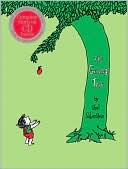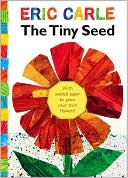Lightning (All Aboard Science Reader Series) : It's Electrifying
Without electricity, life would be radically different. This book explains electricity and its natural counterpart, lightning. With fascinating facts, including ancient myths and early scientific experiments like Ben Franklin's famous kite-flying adventure, this subject is perfect for young readers who study electricity and lightning.\ \ \ Introduces the wonders of electricity and lightning, including a look at what different cultures once believed lightning to be and...
Search in google:
Without electricity, life would be radically different. This book explains electricity and its natural counterpart, lightning. With fascinating facts, including ancient myths and early scientific experiments like Ben Franklin's famous kite-flying adventure, this subject is perfect for young readers who study electricity and lightning.Marilyn Courtot - Children's LiteratureOpening with a description of the great blackout in 1965 really makes the point about the importance of electricity in our lives. As Dussling notes, the traffic lights didn't work, subway trains stopped, people were trapped in elevators and there was a total blackout. She explains the force in simple terms, but it still may be hard to understand how and why electricity works. Since we can't really see the electricity that powers the appliances and lights in our homes, it is even harder to understand this power source. The one form that we do see is lighting. While highlighting some of the dangers, Dussling reassures young readers that it is unlikely that you will ever be struck by lighting. There is information about static electricity, myths and legends, and the work of Ben Franklin who proved that lighting was electricity. She describes his experiments and appropriately cautions kids not to try it themselves. The book closes with some safety guidelines and a description of fulgurites (formed when lighting strikes beach sand)) and how you can figure out how far away a storm is. This book could be paired with How Ben Franklin Stole the Lighting, The Time Pincher and The Big Storm. It would work well in a science unit about energy sources as well as one about the weather. Part of the "All Aboard Science Reader" series, Station Stop 3. 2002, Grosset and Dunlap,
\ Children's LiteratureOpening with a description of the great blackout in 1965 really makes the point about the importance of electricity in our lives. As Dussling notes, the traffic lights didn't work, subway trains stopped, people were trapped in elevators and there was a total blackout. She explains the force in simple terms, but it still may be hard to understand how and why electricity works. Since we can't really see the electricity that powers the appliances and lights in our homes, it is even harder to understand this power source. The one form that we do see is lighting. While highlighting some of the dangers, Dussling reassures young readers that it is unlikely that you will ever be struck by lighting. There is information about static electricity, myths and legends, and the work of Ben Franklin who proved that lighting was electricity. She describes his experiments and appropriately cautions kids not to try it themselves. The book closes with some safety guidelines and a description of fulgurites (formed when lighting strikes beach sand)) and how you can figure out how far away a storm is. This book could be paired with How Ben Franklin Stole the Lighting, The Time Pincher and The Big Storm. It would work well in a science unit about energy sources as well as one about the weather. Part of the "All Aboard Science Reader" series, Station Stop 3. 2002, Grosset and Dunlap, \ — Marilyn Courtot\ \








